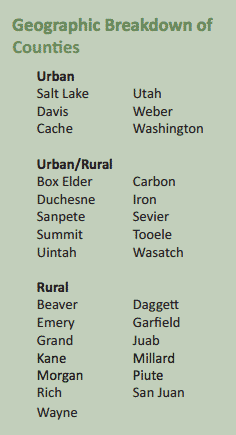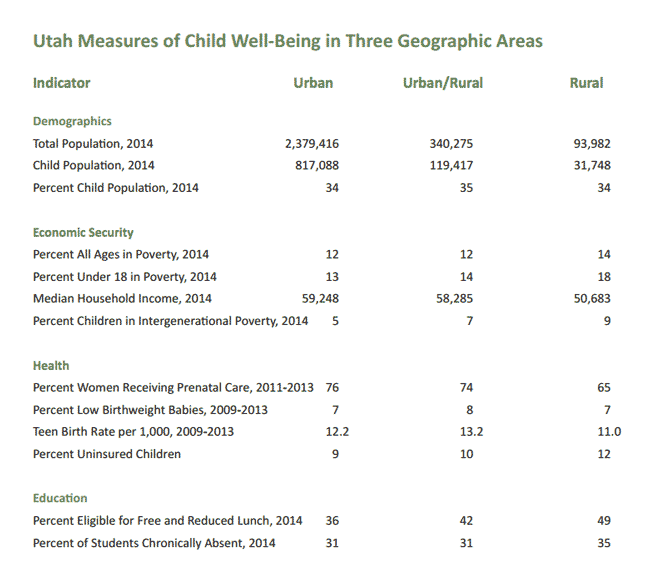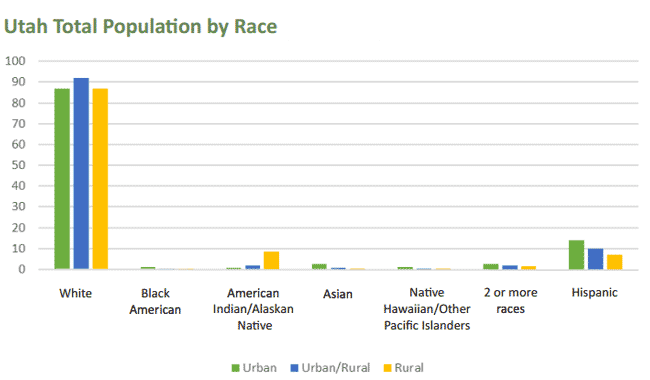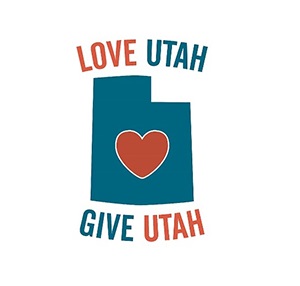 It is widely agreed that rural communities have a different set of issues than more urban communities. While all low-income families, regardless of where they live, need connections to support programs and access to economic opportunities, strategies that work in urban areas often cannot be applied to rural areas where social and economic programs are few and far between.
It is widely agreed that rural communities have a different set of issues than more urban communities. While all low-income families, regardless of where they live, need connections to support programs and access to economic opportunities, strategies that work in urban areas often cannot be applied to rural areas where social and economic programs are few and far between.
Because access to services is such an important issue in Utah’s rural areas, it is imperative that policymakers and service providers have a clear view of the problems facing rural communities. In Voices for Utah Children’s annual publication Measures of Child Well-Being in Utah, a variety of child well-being indicators are presented at the county level. These indicators cover important milestones in areas such as economic security, education, and health.
This edition of Data Links explores several of the indicators annually presented in Measures to see how much or if child well-being differs in rural communities as compared to urban communities.
DEFINING URBAN AND RURAL
 There are a myriad of definitions for “urban” and “rural” from a variety of sources. For the purposes of this report we have chosen to use three categories based on the American Community Survey’s three breakdowns for the one year, three year and five year estimates:
There are a myriad of definitions for “urban” and “rural” from a variety of sources. For the purposes of this report we have chosen to use three categories based on the American Community Survey’s three breakdowns for the one year, three year and five year estimates:
Urban Areas - Areas with populations of 65,000+
Urban/Rural - Areas with populations of 64,999 to 20,000
Rural Areas - Areas of population 20,000 and under
Counties included in each area are indicated in the box to the right.



CONCLUSION
This data brief started out by saying it is widely agreed that rural communities have a different set of issues than urban communities. Access to services is difficult for a variety of reasons including lack of transportation and a lack of service providers. When there are no providers in town and individuals must wait on availability, scheduling can become a problem. In some cases where an individual has no family leave policy, traveling to a provider can mean missed wages. Child well-being indicators for children in rural Utah are, in general, slightly worse than those in urban areas. This makes all the above issues even more pressing and an area of concern that needs to be addressed.
“In urban areas, questions of access to care often revolve around whether all segments of the population have access to the full range of specialized medical centers serving the metropolitan area. In rural areas, the issue is often whether there are any health care facilities and providers to access at all. Large metropolitan counties have nearly four times as many physicians per 100,000 residents as do rural counties with only small towns."
Demographic Trends in Rural and Small Town America KENNETH JOHNSON, Carsey Institute Reports on Rural America 01/2006
Printer-friendly report:
![]() A Tale of Two Utahs: How do Urban and Rural Utah Measure Up?
A Tale of Two Utahs: How do Urban and Rural Utah Measure Up?
(Sources and definitions are available in the printer-friendly version of this report.)
 March 31, 2016 is Love UT Give UT!
March 31, 2016 is Love UT Give UT!
It’s a day for Utahns to give to the nonprofits that make Utah special. Every donation to Voices for Utah Children through Love UT Give UT gives Voices a chance to win matching grants and prizes.
And you don't have to wait! Donate now at http://bit.ly/loveUTchildren.
For 30 years now, Voices for Utah Children has called on our state, federal and local leaders to put children’s needs first. But the work is not done. The children of 30 years ago now have children of their own. Too many of these children are growing up in poverty, without access to healthcare or quality educational opportunities.
How can you be involved?
Make a tax-deductible donation to Voices for Utah Children—or join our Network with a monthly donation of $20 or more. Network membership includes complimentary admission to Network events with food, socializing, and opportunity to meet child advocacy experts. And don't forget to join our listserv to stay informed!
We look forward to the future of Voices for Utah Children and we hope you will be a part of our next 30 years.
Special thanks to American Express for sponsoring our 30th Anniversary Year. 






